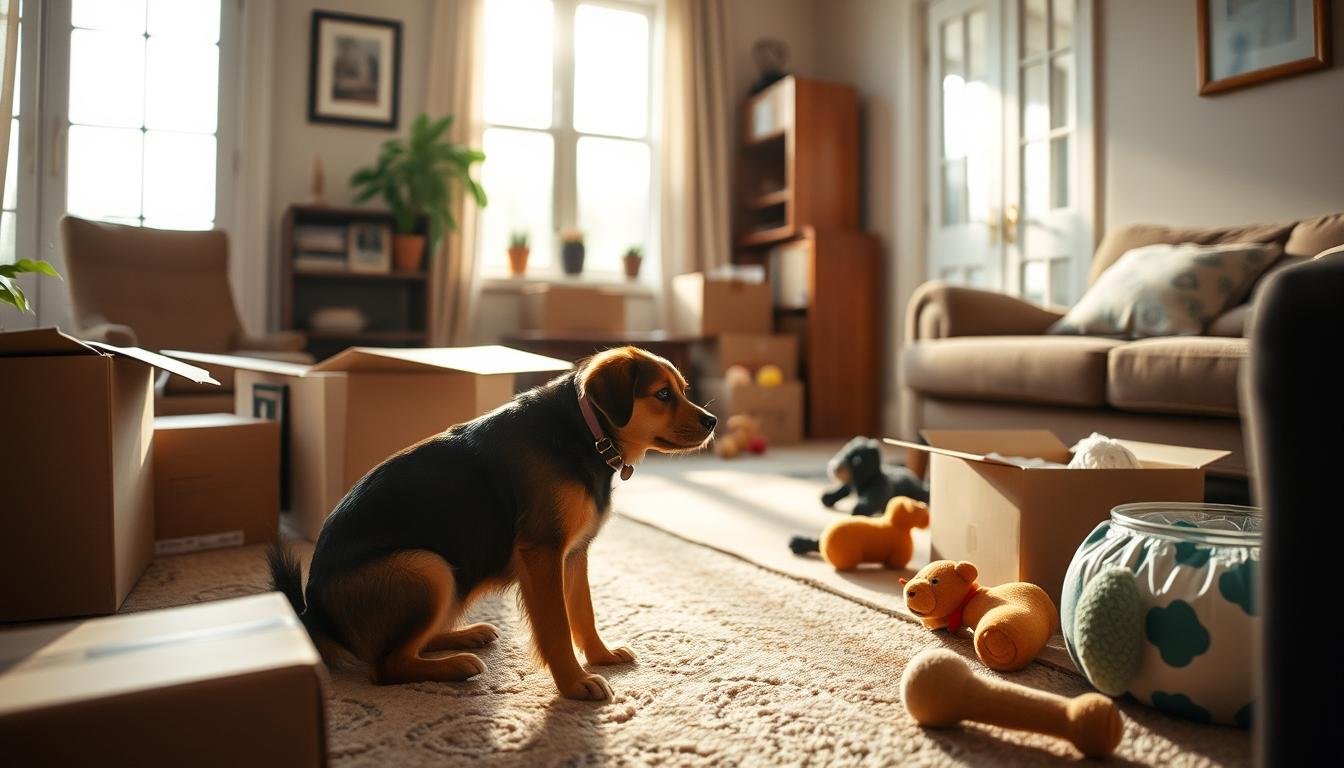Ever think about how your dog handles moving to a new place? Dogs can get really stressed when they move, leading to anxiety and changes in behavior. As a pet owner, it’s important to know how to help your dog adjust to a new home.
Creating a safe space for your dog during this time can really help. It makes their transition smoother and easier.
Moving to a new place messes up your dog’s routine and familiar spots. This can make them feel excited or scared. By using the right training methods and creating a supportive environment, you can help reduce your dog’s stress.
In this article, we’ll look at ways to help your dog recover from relocation. We’ll make sure they feel safe and comfortable in their new home.
Key Takeaways
- Relocation can cause stress and anxiety in dogs
- Creating a safe space is essential for your dog’s recovery
- Proper dog training helps ease the transition
- Maintaining routines supports relocation recovery
- Patience and understanding are key in supporting dogs
Understanding Relocation Stress in Dogs
Dogs feel stress when they move, just like people do. When you move, your dog might show signs of stress. These can include changes in appetite, too much barking, or destructive behavior. Spotting these signs early helps you support your pet through this tough time.
Quick Recommendation: This blog article contains tips for attending to your dogs during emergency situations. If you are looking for a more comprehensive tips or training program, we strongly recommend K9 Training Institute.
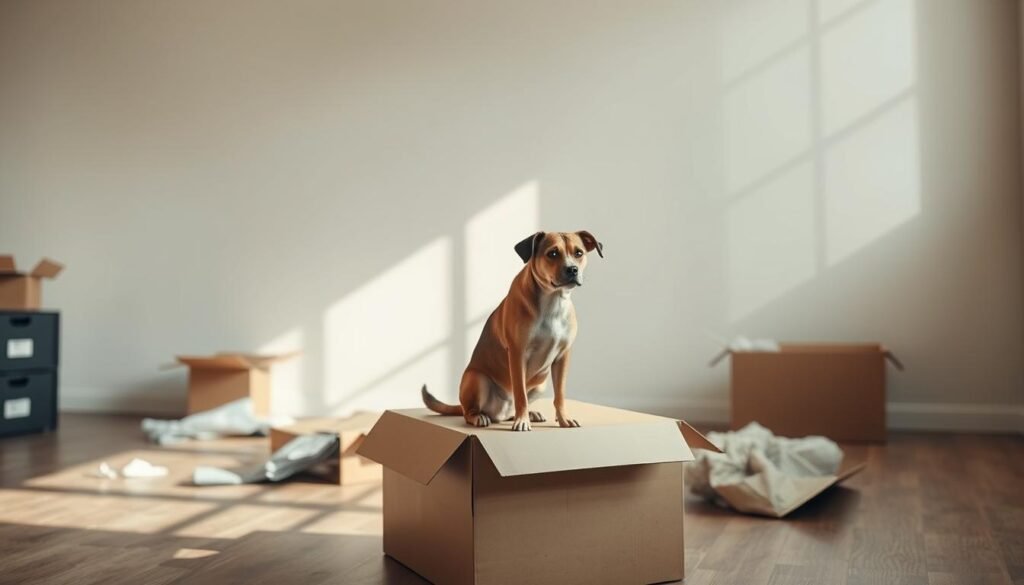
Dogs love routine and knowing what’s familiar. A new place can upset their sense of security, making them stressed. Your dog might become clingy, hide, or act strangely as they try to deal with the change.
To help your dog adjust, watch their body language. Signs like tucked tails, flattened ears, or too much panting show stress. By understanding these signs, you can make a comforting space for your pet and help them settle into their new home.
Every dog is different when it comes to change. Some adjust fast, while others need more time and patience. It’s important to meet your dog’s unique needs during a move to help them feel safe and secure in their new place.
Setting Up a Comfort Zone in Your New Home
Creating a dog comfort zone is key when moving to a new home. Start by picking a quiet spot away from busy areas. This should be your dog’s safe place during the adjustment.
Place your dog’s bed, toys, and food bowls in this area. It helps keep them feeling familiar.
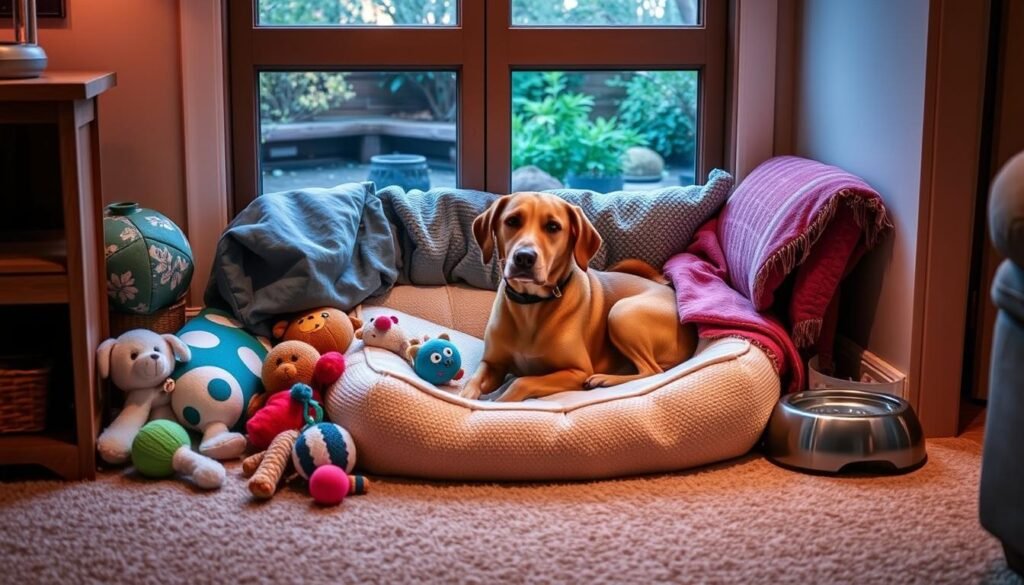
Bring items from your old home to help your dog settle. This can include favorite blankets, chew toys, or a piece of your clothing. The scent of these items comforts your dog and lowers stress in the new place.
Keep your dog’s routine the same as much as possible. This includes meal times and walks. It helps them feel more secure.
Slowly introduce your dog to new parts of the house. Use treats and praise to make it positive. This builds confidence and lowers anxiety.
Remember, patience is crucial when helping your dog adjust to their new home.
Consider using pheromone diffusers or calming music in your dog’s comfort zone. These can make the atmosphere more soothing. With time and care, your dog will feel right at home in their new space.
Dog Training Techniques for Adjustment
Relocating can be tough on your furry friend. Using effective dog training techniques can help your pet adjust to their new home. Positive reinforcement is key in this process. Reward your dog with treats or praise when they display good behavior in the new environment.
Quick Recommendation: This blog article contains tips for attending to your dogs during emergency situations. If you are looking for a more comprehensive tips or training program, we strongly recommend K9 Training Institute.
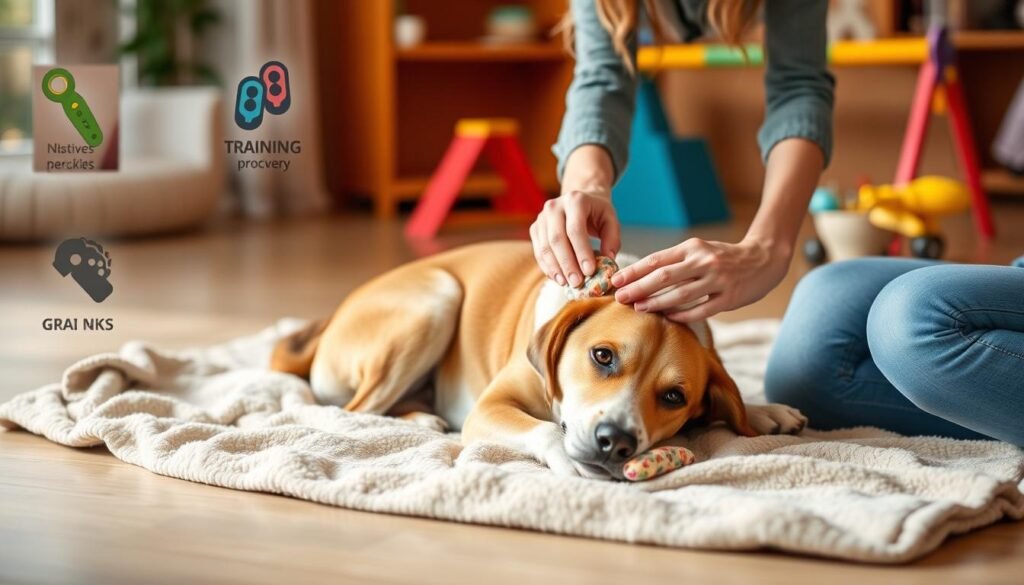
Start with basic commands like “sit” and “stay.” These familiar cues provide structure and comfort for your pet. Practice these commands in different areas of your new home to build your dog’s confidence. Clicker training is another useful tool for behavior modification. The click sound marks the exact moment your dog performs the desired action, making it easier for them to understand what you want.
If your dog shows signs of anxiety, such as excessive barking or destructive behavior, address these issues promptly. Create a consistent routine and provide plenty of mental and physical stimulation. Use puzzle toys or hide treats around the house to keep your dog engaged and distracted from stress. With patience and consistent training, your dog will soon feel at home in their new surroundings.
Managing Your Dog’s Daily Schedule
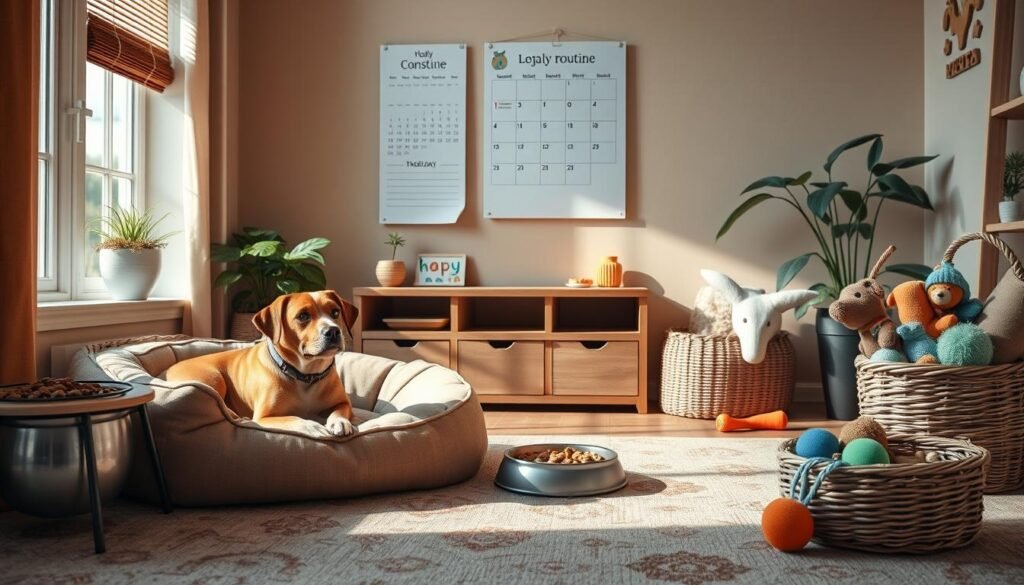
Having a regular schedule is important for your dog to adjust to a new home. Set up regular feeding times and stick to them. Keeping meal times the same will make your pet feel more at ease.
Make sure your dog gets daily walks and playtime. Exercise is vital for their health and happiness. It helps them relax and keeps them active. Look for safe places to walk or play in your new area.
It’s good to mix old habits with new ones slowly. Keep some things the same but also introduce new things little by little. This way, your dog won’t get too stressed.
Even though a schedule is important, it’s okay to be flexible sometimes. Try to keep mealtimes, walks, and bedtime the same. This routine will give your dog a sense of security and help them feel at home.
Building Confidence in the New Environment
Helping your dog feel secure in a new home is key to a smooth transition. Start with environmental enrichment activities to boost your pup’s confidence. Puzzle toys and scent games are great tools for dog confidence building.
Hide treats around the house or use interactive feeders to make mealtime more engaging. These activities stimulate your dog’s mind and reduce anxiety.
Gradual socialization is crucial in your new neighborhood. Take short walks to familiarize your dog with the area. Let them explore at their own pace, rewarding calm behavior.
When meeting new people or dogs, keep interactions brief and positive. This approach helps your furry friend associate the new surroundings with good experiences.
Create positive connections within your home too. Designate a special spot for your dog in each room, like a cozy bed or mat. Reward them for using these areas to build a sense of belonging.
Regular playtime and training sessions in different parts of the house can also boost your dog’s comfort level. With patience and consistent positive reinforcement, your dog will soon feel right at home in their new environment.
Conclusion
Relocating with your dog can be tough, but it’s doable with the right steps. Be patient. Your dog might take time to get used to the new place.
Stick to a routine and use positive training methods. This will make your dog feel safe and confident. Every dog is different, so watch what your pet needs closely.
With your support, your dog can adjust well over time. If problems persist, get help from a dog trainer or behaviorist. Your hard work will help your dog be happy and well-adjusted in your new home.
Quick Recommendation: This blog article contains tips for attending to your dogs during emergency situations. If you are looking for a more comprehensive tips or training program, we strongly recommend K9 Training Institute.

